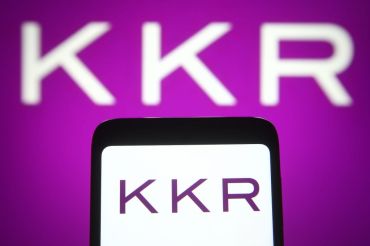How Inclusive Design Can Make the Modern Office Work Better
By Elizabeth Lowrey October 28, 2023 10:00 am
reprints
The business case for inclusion and belonging is well known, and leading companies are working hard to make their cultures more welcoming to all. As workplace strategists and designers, we know that commercial real estate can be a significant player in the drive toward more inclusive and equitable workplaces.
Discussions about inclusivity often focus on managerial behaviors such as ensuring diverse voices are heard. Physically inclusive workplace design is less widely understood, but the right physical environment is a powerful accelerator of inclusivity. Thoughtful spatial planning, physical proximity, and social connection through design can help to make the workplace a hub of diverse insights, creativity and innovation — which is exactly what leading companies want.

For years, office design focused on efficiency, primarily using just three components: Private offices, conference rooms and cubicles. “Work” doesn’t work that way anymore. On a typical day, everyone does a range of tasks.
Today, efficiency requires a dynamic and flexible range of spaces. Practically, that means areas like acoustically private spaces for focused tasks, collaborative areas for brainstorming, and open spaces for informal interactions and “creative collisions” —those flashes of insight that happen when people from different disciplines meet spontaneously.
Inclusion in design is more than ADA-compliant bathrooms and braille signage. It reflects a company’s commitment to equality by creating a subjective experience in which each employee understands that their workplace accommodates their unique qualities. Like inclusive management, it tells employees that they can bring their whole selves to work — that their individuality is inherently valuable and welcome. I heard this expressed simply, yet profoundly, following the recent completion of a workspace. During post-occupancy interviews, an employee told me, “I know from this space that my employer is thinking about my whole person.”
Inclusive design is especially powerful in welcoming people with different abilities, cognitive orientations, skill sets, and physical and psychological needs. Flexible, inviting and practical workplace designs empower them. My oldest daughter has ADHD, and her company offers appropriately designed places for neurodiverse employees. Working in an acoustically private space — as opposed to a crowded “open plan” bench — she is fully focused, creative, and engaged throughout the day. With this simple design option, her employer increases her productivity and sends a positive message of inclusion to everyone.
Reflecting company culture, inclusive design can also break down unwanted yet implicit hierarchies among executives, managers, and line workers. By making prime space — a beautiful view, for example — into shared space, inclusive design helps build community in a diverse workforce.
Research shows that a significant majority of employees correlate workplace belonging with their productivity and loyalty. When employees feel a strong sense of belonging, they are equipped with the “psychological safety to outperform,” which, according to Amy Edmondson at Harvard Business School, inevitably leads to more engaged and high-performing individuals and teams. This engagement, facilitated by the design and layout of the workspace itself, encourages the sharing of knowledge, allowing unique viewpoints to flow freely within the organization.
As my firm refines its inclusive design techniques, we find that it works best as an ongoing collaboration among all stakeholders. We talk to leaders and employees, analyzing the many ways a space might be used well (programming); work technologies (including mobile technologies); and even company culture. We observe how, when and where teams work best and ask how might the right design magnify the magic of a fully engaged workforce?
Offering people the autonomy to choose their optimum environment while at the office fosters a sense of ownership and belonging, indispensable drivers of engagement. Choice reinforces an organization’s commitment to inclusion. Choice offers employees the latitude to determine how, when and where they can be most effective. Choice sends a message of respect and trust for the individual.
Well-designed communal spaces serve as village squares where employees naturally congregate to share insights and collaborate. In this way, inclusive space is a strategic asset that elevates learning, broadens collective wisdom, and enriches organizational performance.
Today’s employees aren’t seeking just a place to work. They want environments that respect and reflect their diverse needs and values. Office spaces are no longer just about their size or location — they represent a strategic opportunity to create an inclusive culture in which business can innovate and thrive. Consequently, the commercial real estate industry finds itself positioned to play a major role in defining the future of work. We are not just building structures but amplifying organizational culture and values.
Right now, those who prioritize inclusivity in design are at the forefront of a new business culture, going beyond efficiency to empowerment, and paving the way for businesses to be more agile, resilient, and successful.
Elizabeth Lowrey is a principal at Elkus Manfredi Architects specializing in workplace strategy and design.


